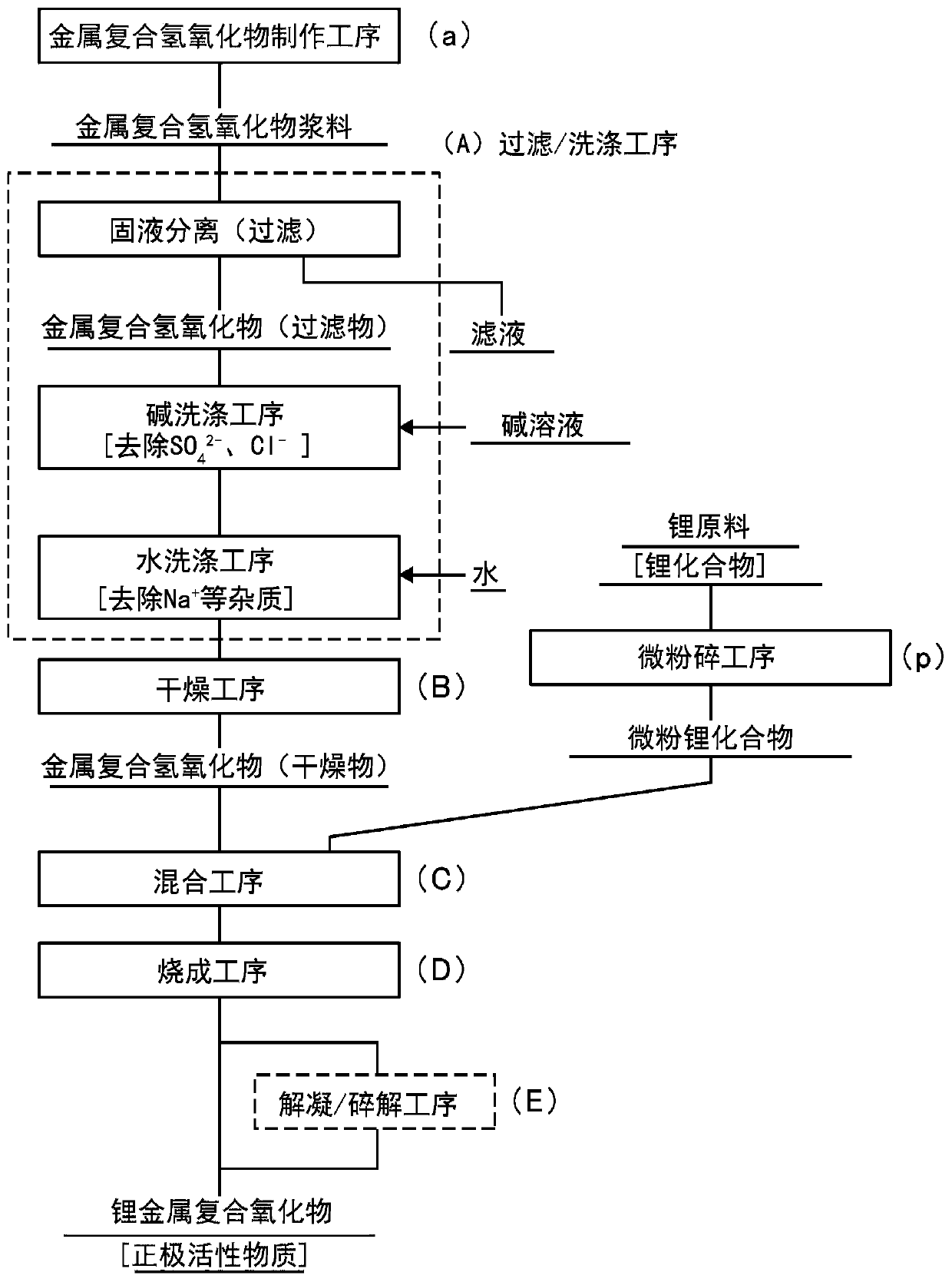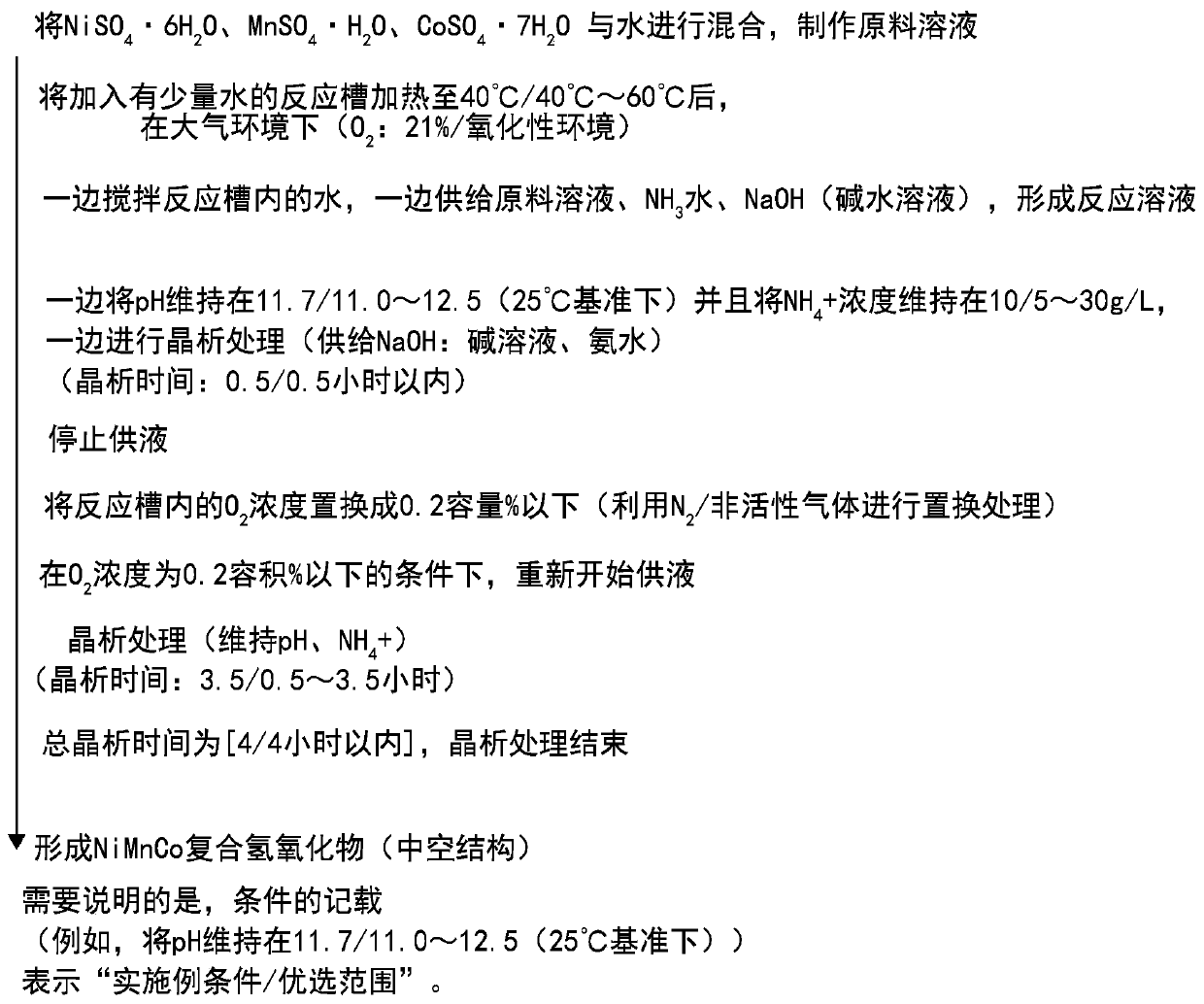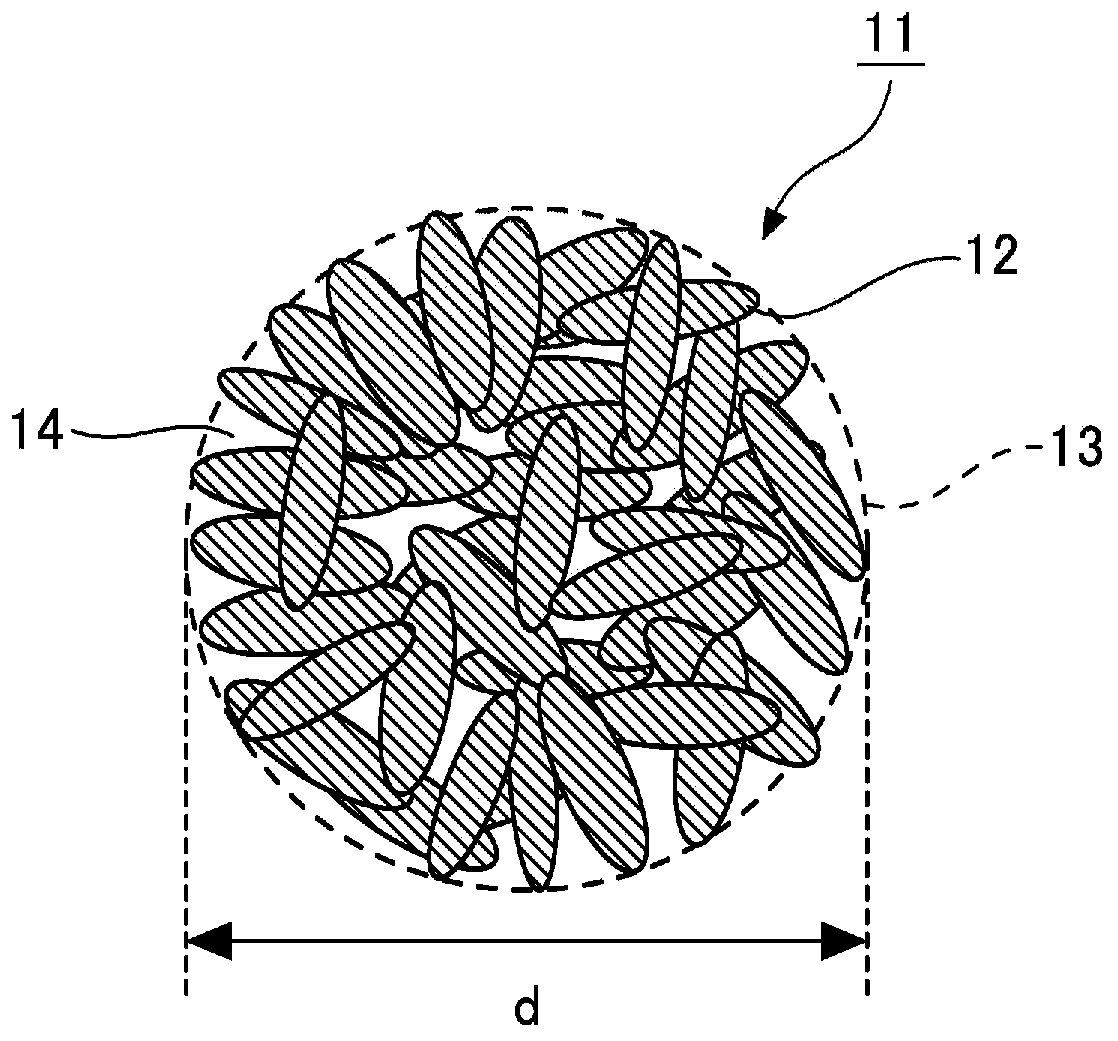Nonaqueous electrolyte secondary battery positive electrode active material and method for producing same, and nonaqueous electrolyte secondary battery which uses positive electrode active material
A positive active material and secondary battery technology, applied in the direction of non-aqueous electrolyte batteries, active material electrodes, electrode manufacturing, etc., can solve the problems of positive active material crystallinity deterioration, output characteristics deterioration, lithium increase, etc., to achieve solubility Lithium production suppression and effects of high output characteristics
- Summary
- Abstract
- Description
- Claims
- Application Information
AI Technical Summary
Problems solved by technology
Method used
Image
Examples
Embodiment 1
[0152] [Metal composite hydroxide]
[0153] a) Manufacture of metal composite hydroxide powder
[0154] [(a) Manufacturing process of metal composite hydroxide]
[0155] First, nickel sulfate hexahydrate, cobalt sulfate heptahydrate, and manganese sulfate monohydrate are dissolved in water so that the molar ratio of nickel, manganese, and cobalt becomes Ni:Mn:Co=35:30:35, and, The raw material solution was prepared so that the concentration of nickel, manganese, and cobalt became 2 mol / L. On the other hand, 900 ml of water was added to a reaction tank with a capacity of 6 L until it overflowed, and the temperature in the tank was heated to 40° C. using a water bath, and the reaction tank at this time was adjusted to an atmospheric environment (oxygen concentration: 21 volume %).
[0156] Then, while stirring the water in the reaction tank, the raw material solution, 25% by mass of ammonia water, and 25% by mass of sodium hydroxide solution were continuously supplied to form...
Embodiment 2
[0210] Lithium carbonate is finely pulverized using a jet mill until the maximum particle diameter in the particle size distribution is 8.0 μm or less and the average particle diameter is 4.0 μm or less. In addition, the same operation as in Example 1 was performed to obtain a positive electrode active material. and evaluate.
[0211] The evaluation results are shown in Table 1.
Embodiment 3
[0213] Lithium carbonate is finely pulverized using a jet mill until the maximum particle diameter in the particle size distribution is 4.1 μm or less and the average particle diameter is 2.5 μm or less. In addition, the same operation as in Example 1 was performed to obtain a positive electrode active material. and evaluate.
[0214] The evaluation results are shown in Table 1.
PUM
| Property | Measurement | Unit |
|---|---|---|
| specific surface area | aaaaa | aaaaa |
| viscosity | aaaaa | aaaaa |
| particle diameter | aaaaa | aaaaa |
Abstract
Description
Claims
Application Information
 Login to View More
Login to View More - R&D
- Intellectual Property
- Life Sciences
- Materials
- Tech Scout
- Unparalleled Data Quality
- Higher Quality Content
- 60% Fewer Hallucinations
Browse by: Latest US Patents, China's latest patents, Technical Efficacy Thesaurus, Application Domain, Technology Topic, Popular Technical Reports.
© 2025 PatSnap. All rights reserved.Legal|Privacy policy|Modern Slavery Act Transparency Statement|Sitemap|About US| Contact US: help@patsnap.com



